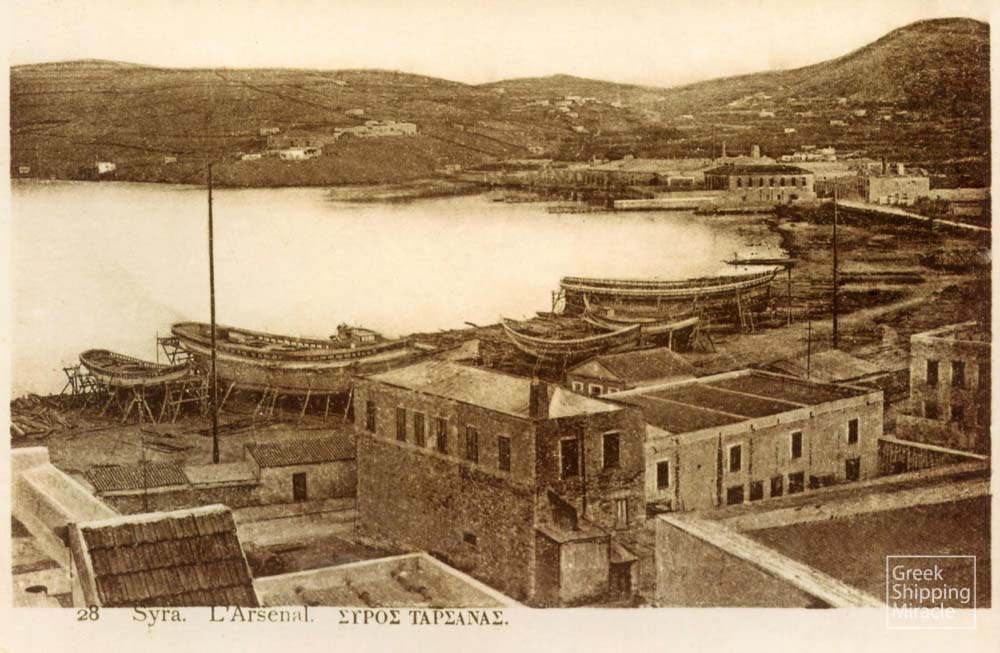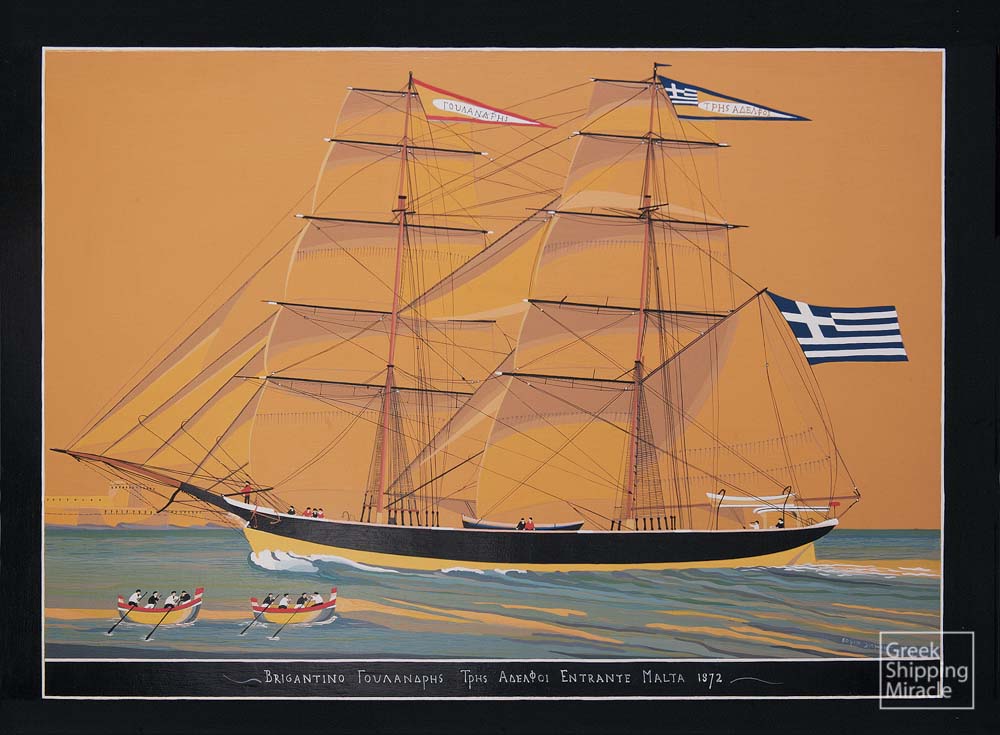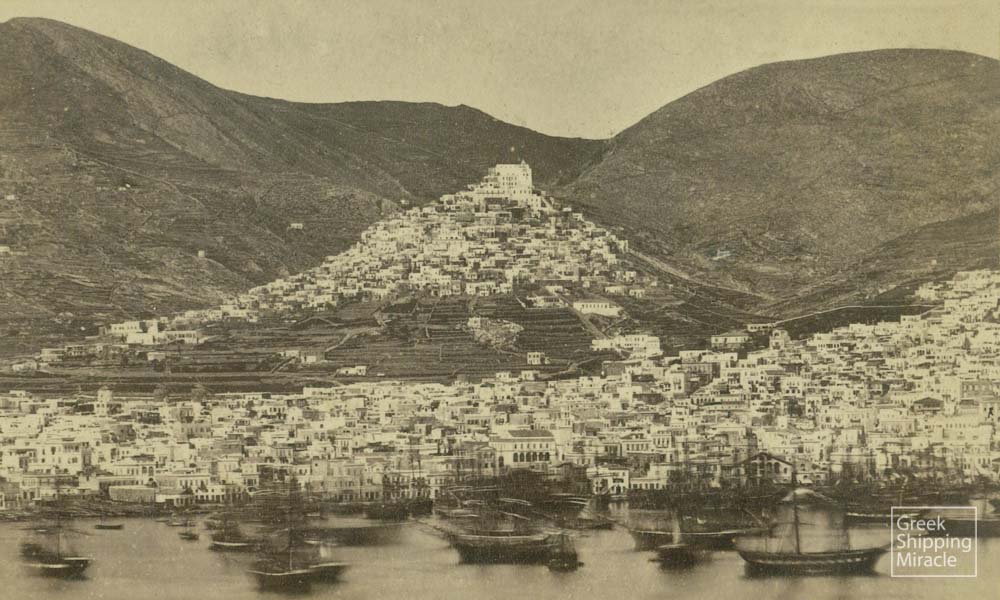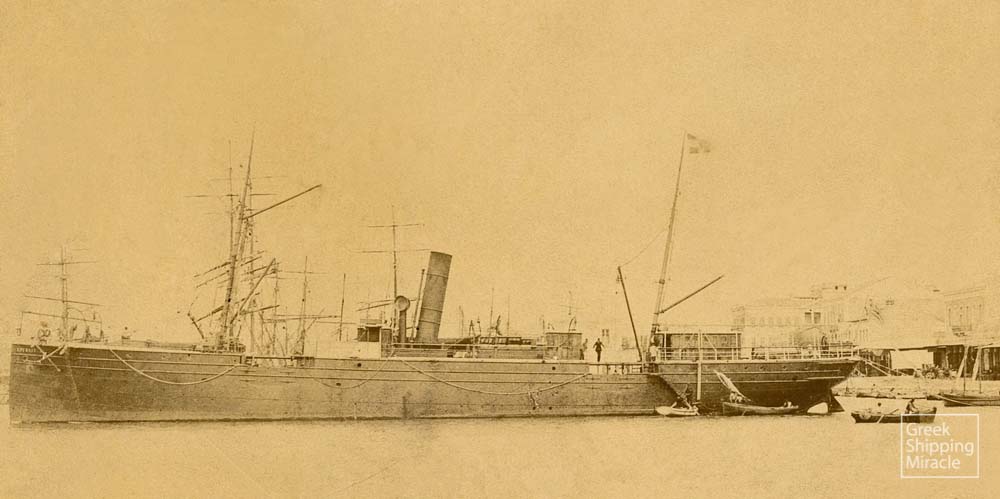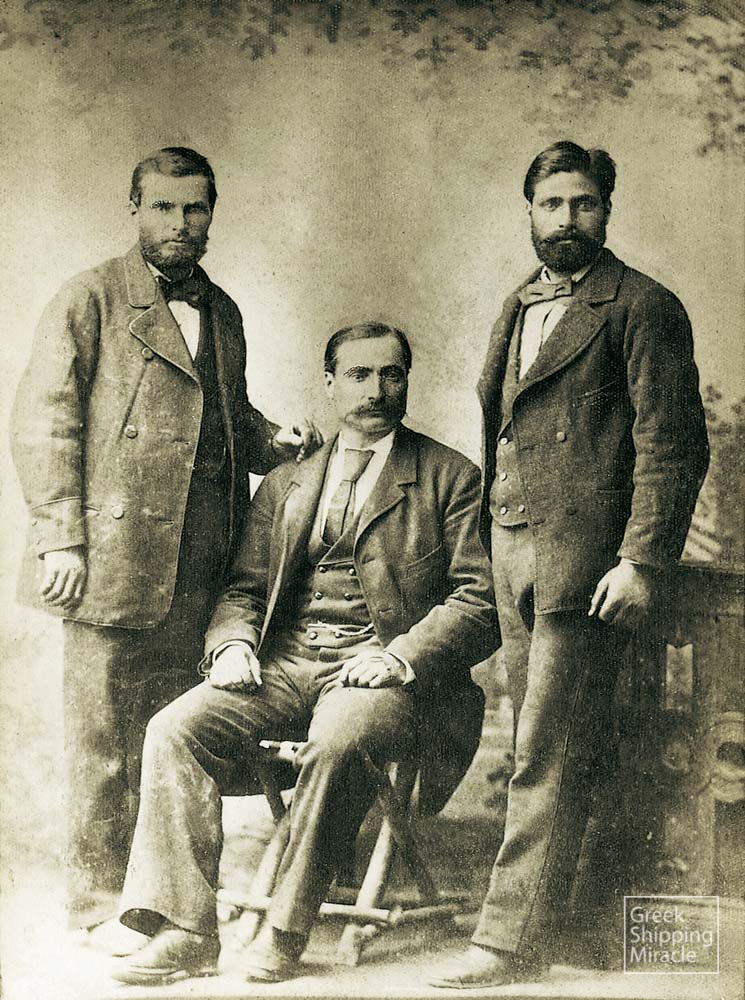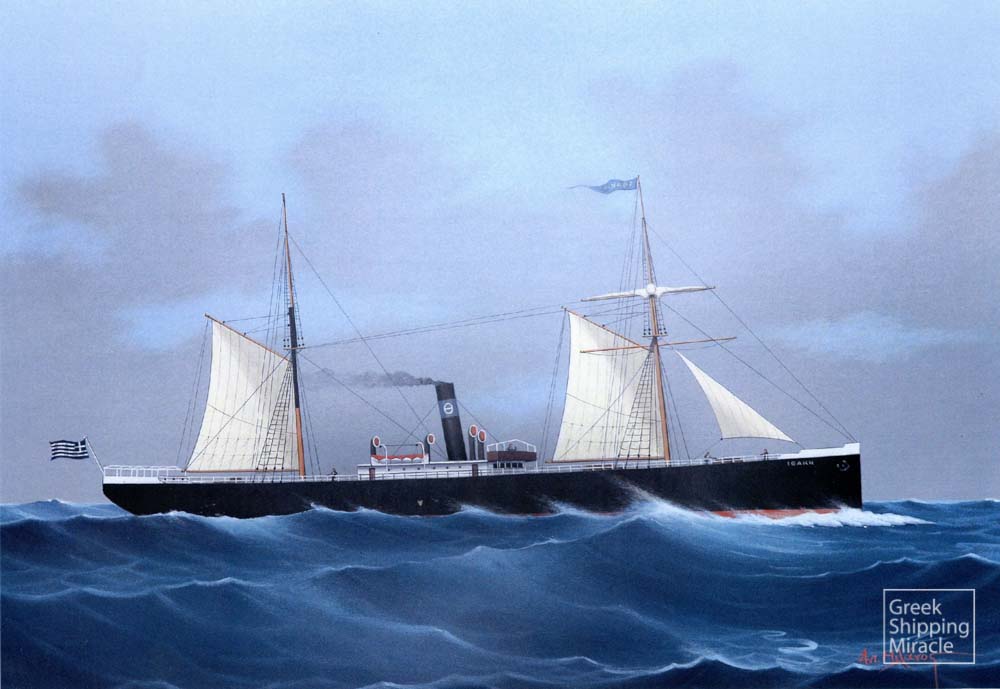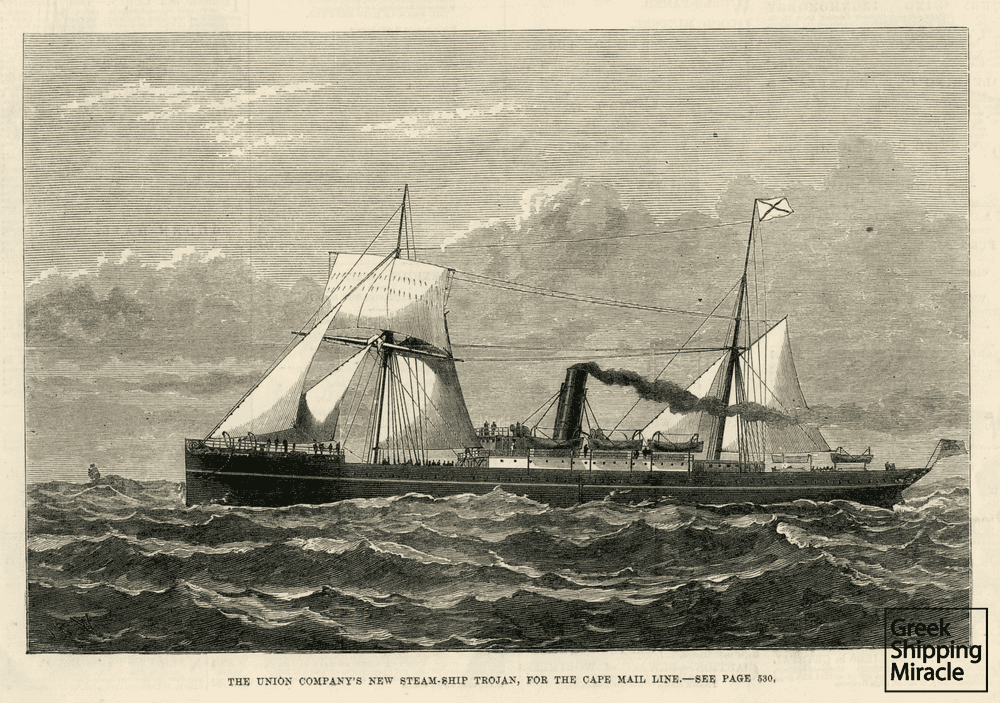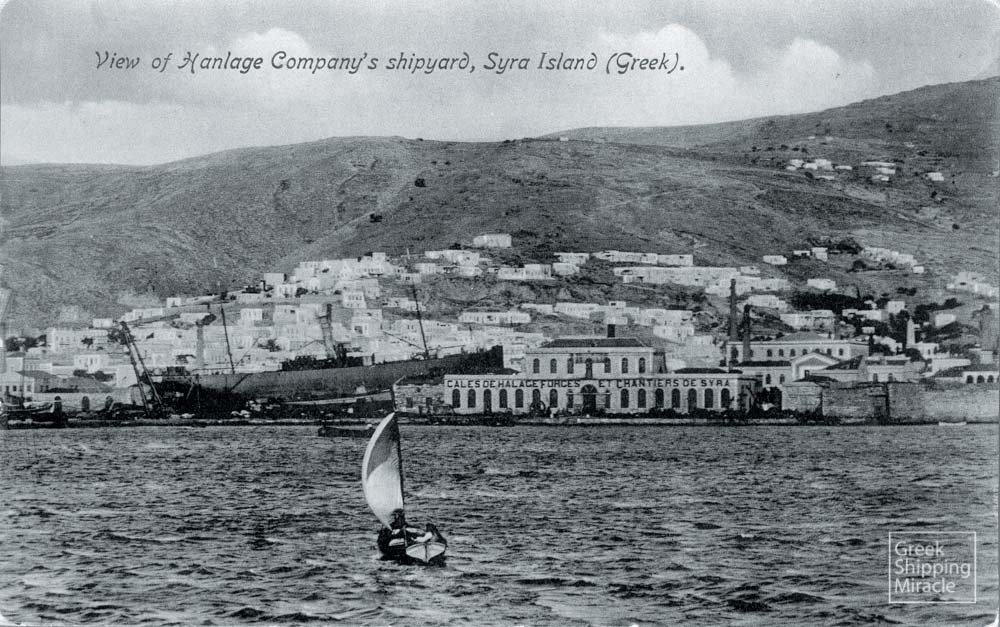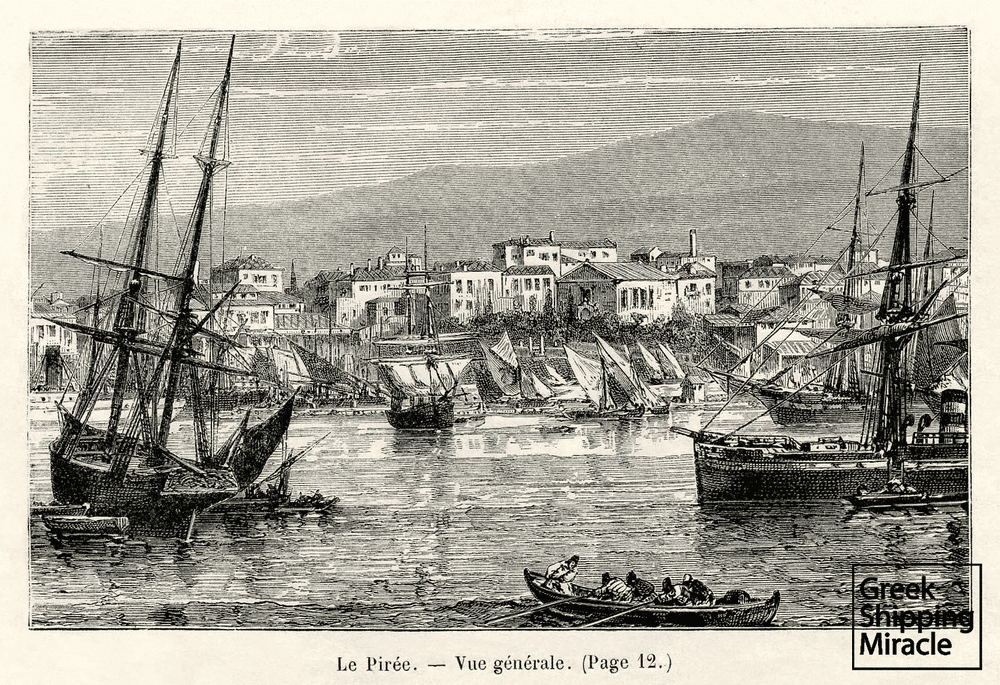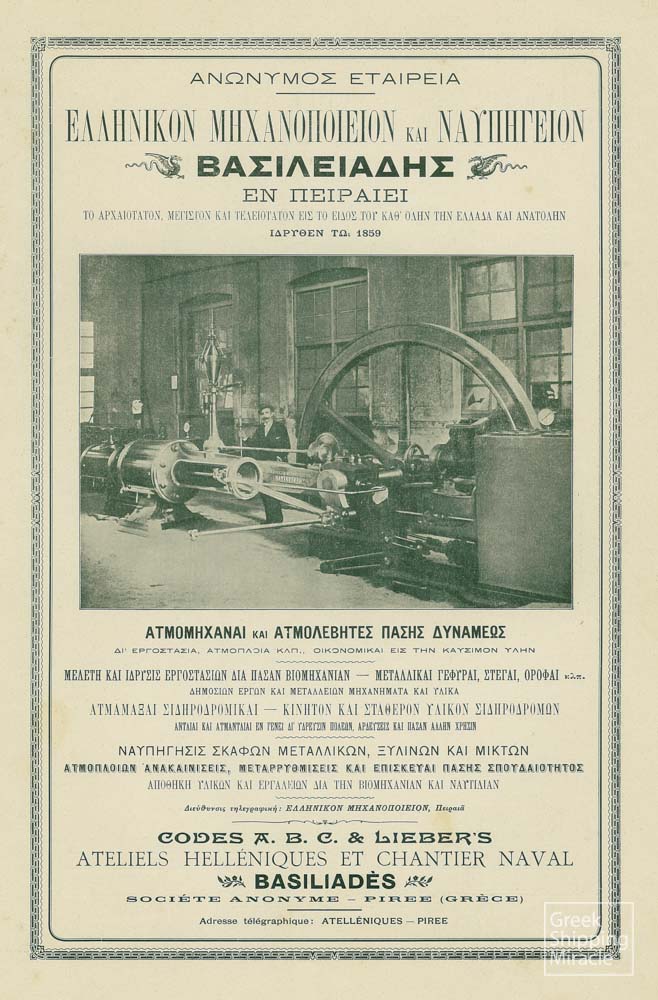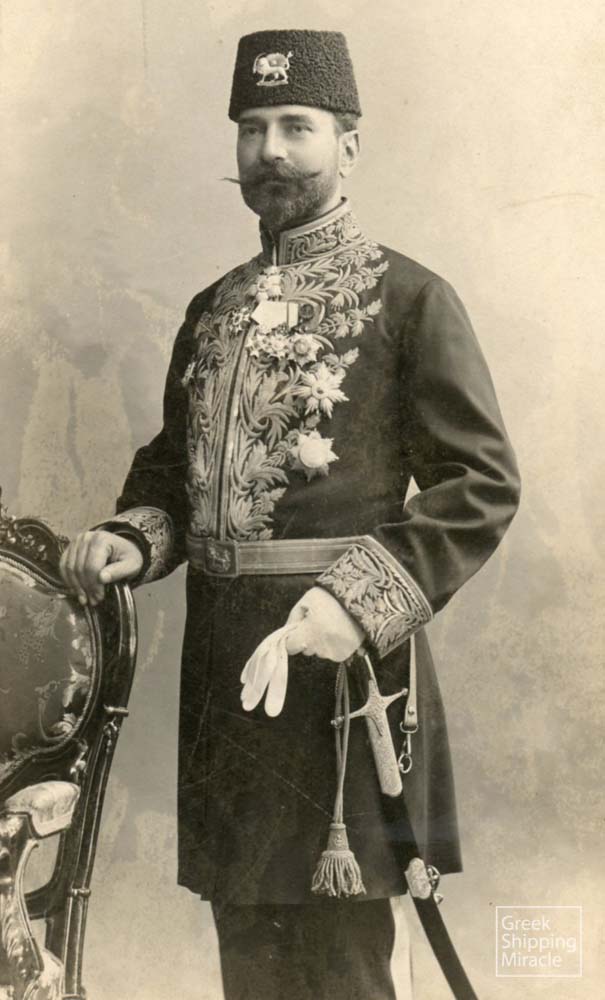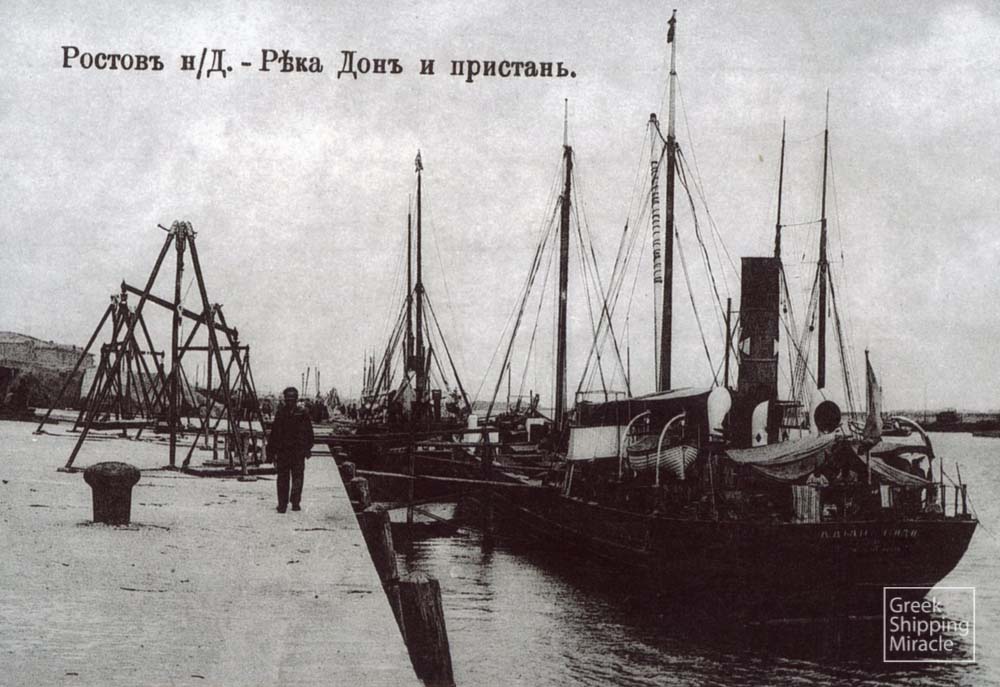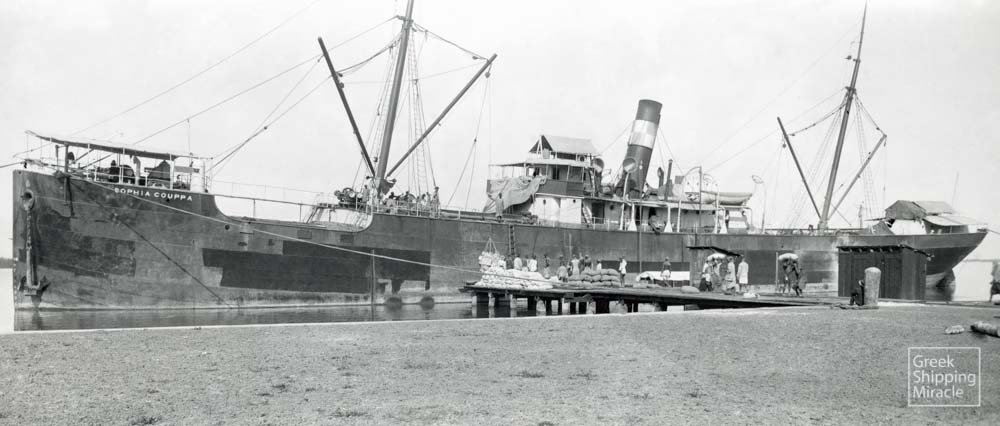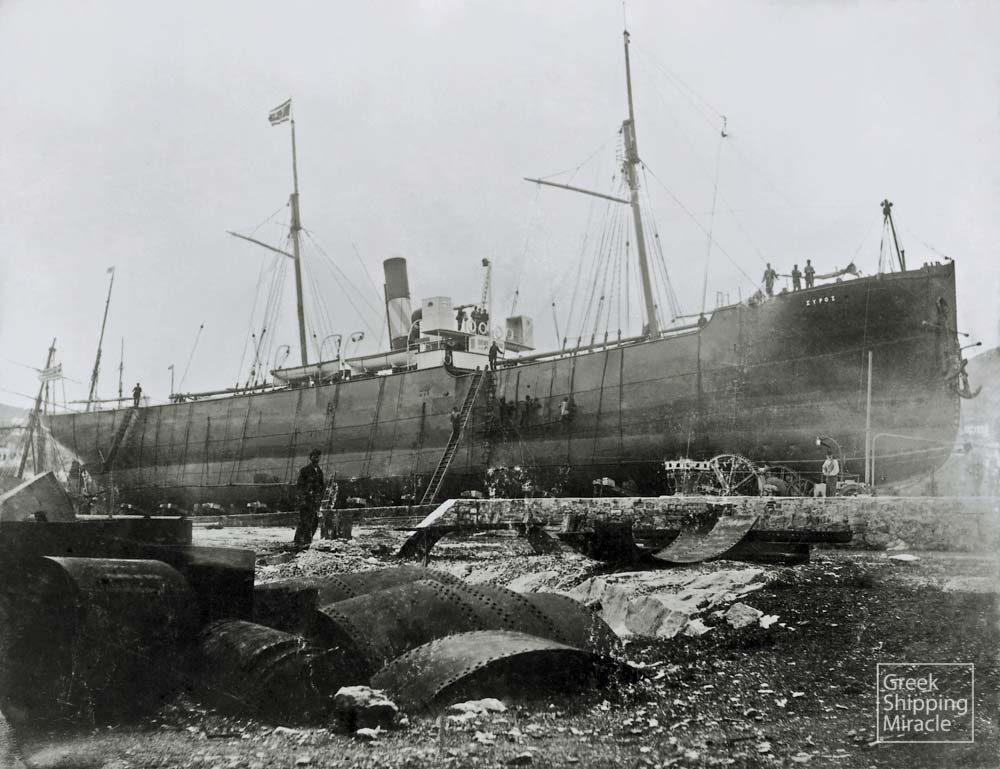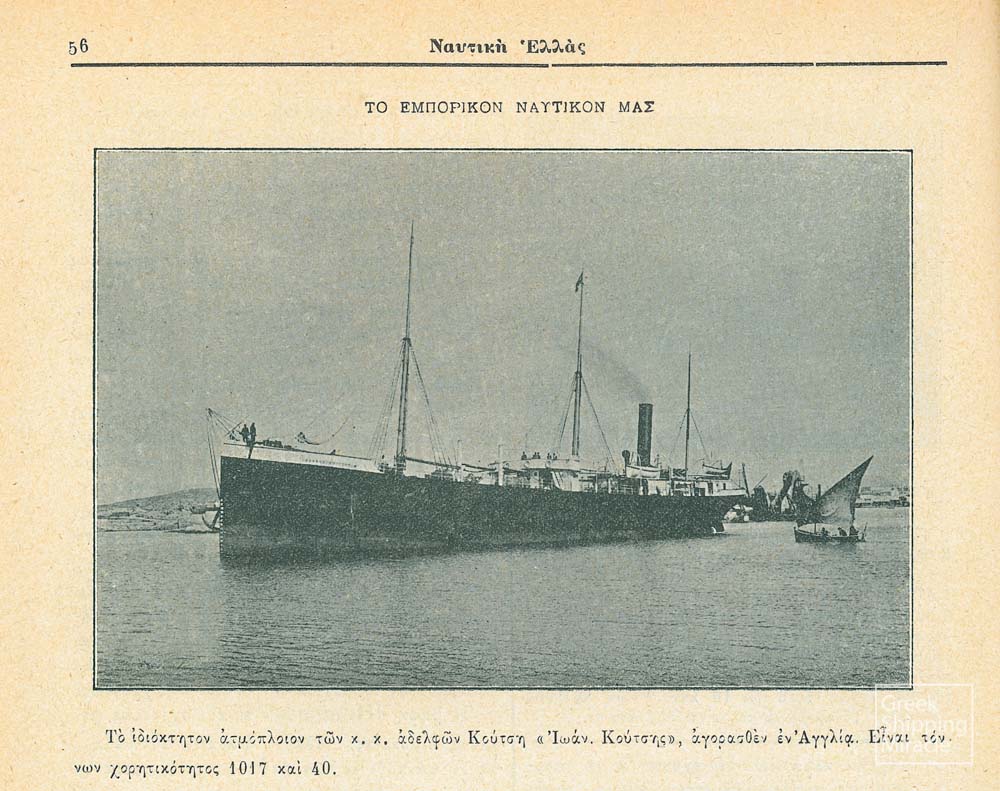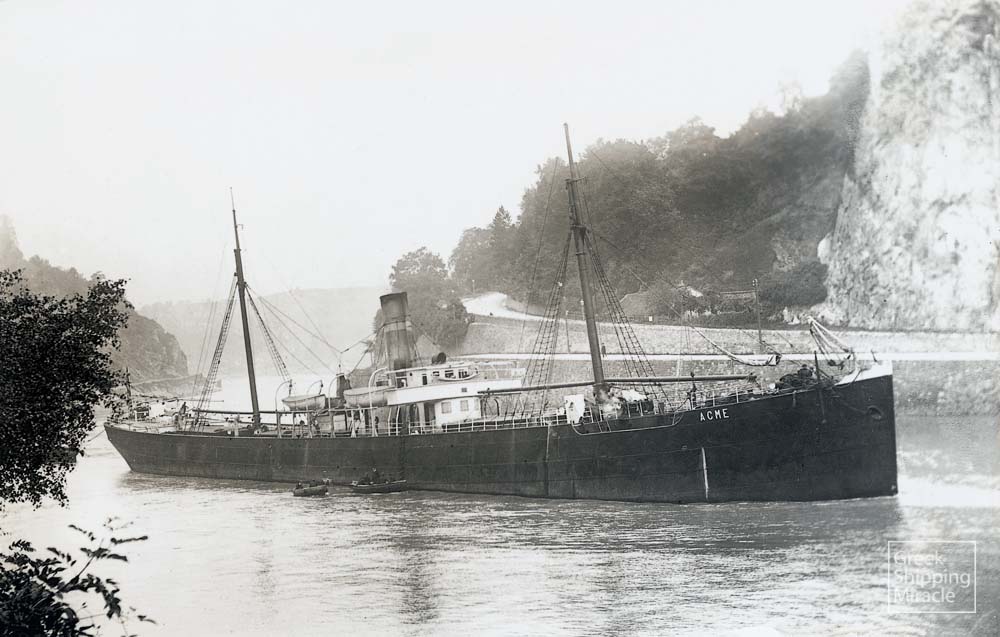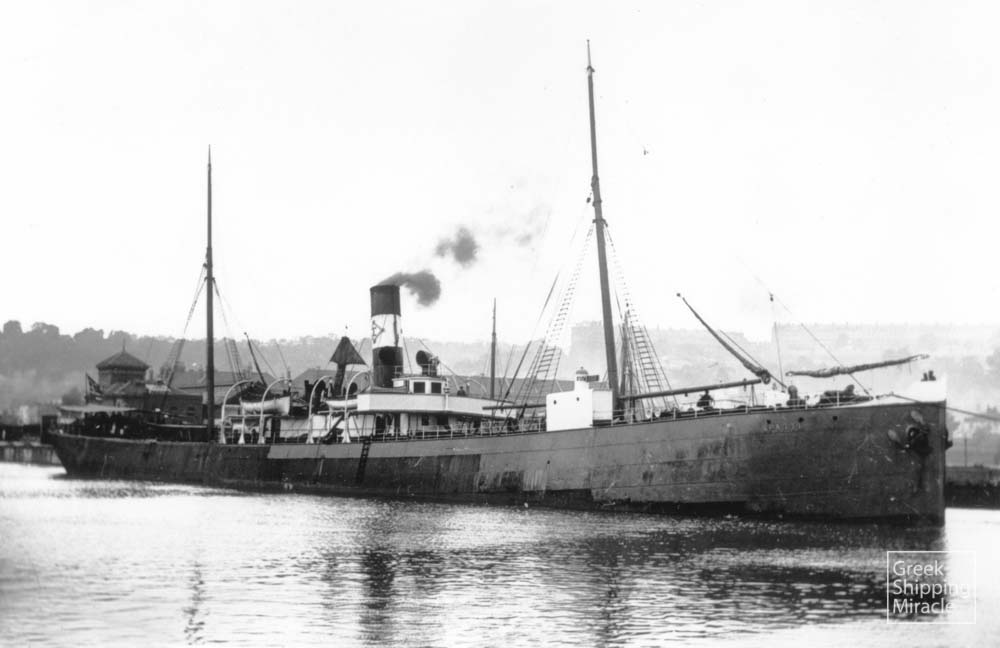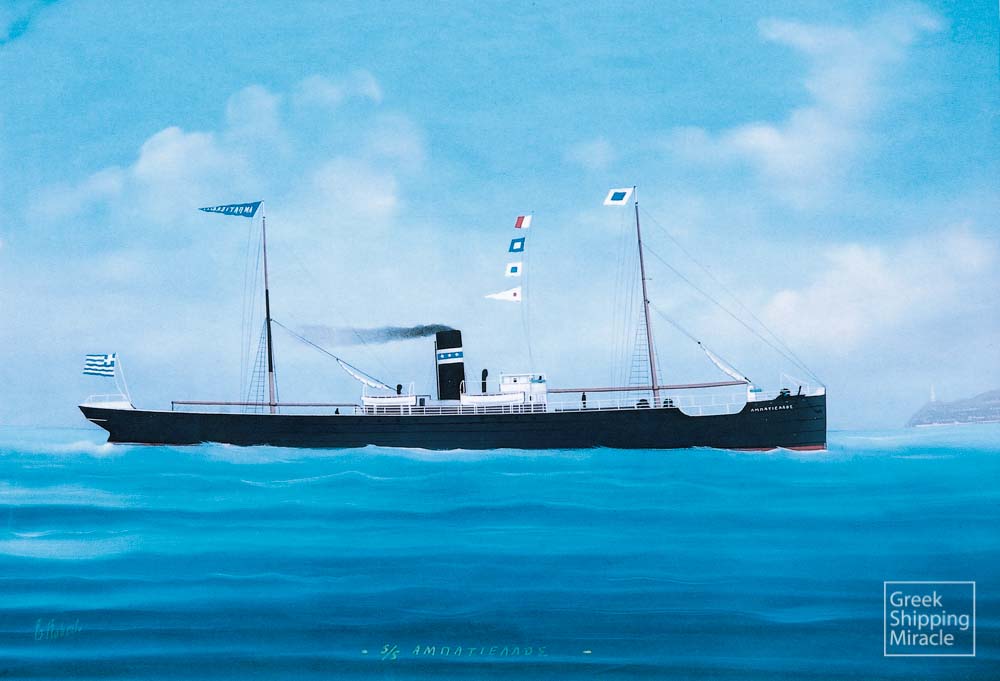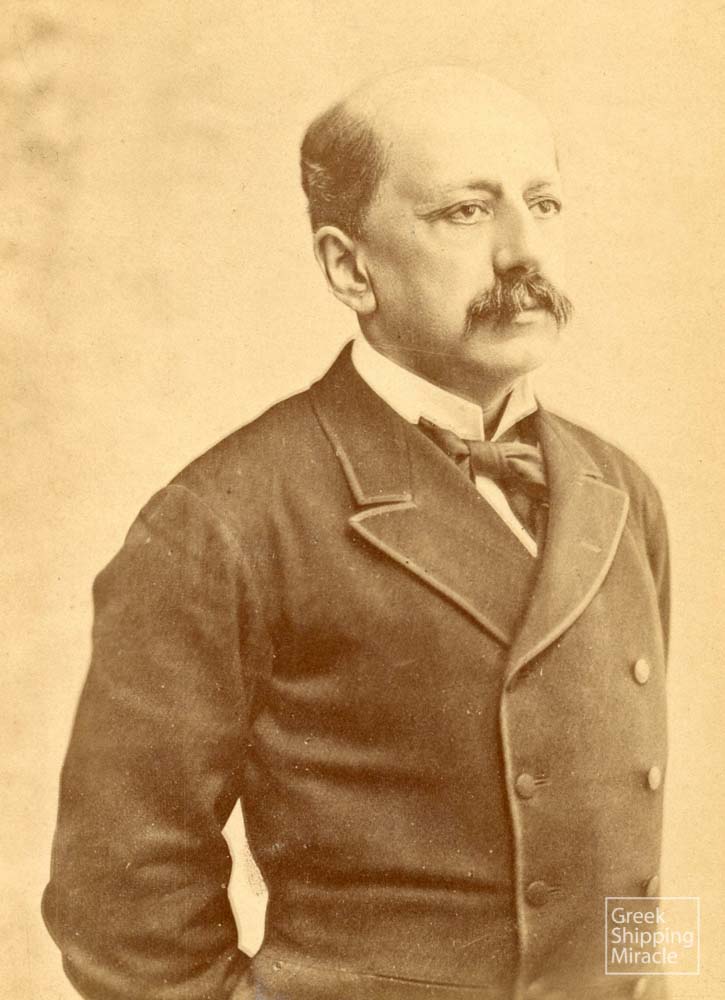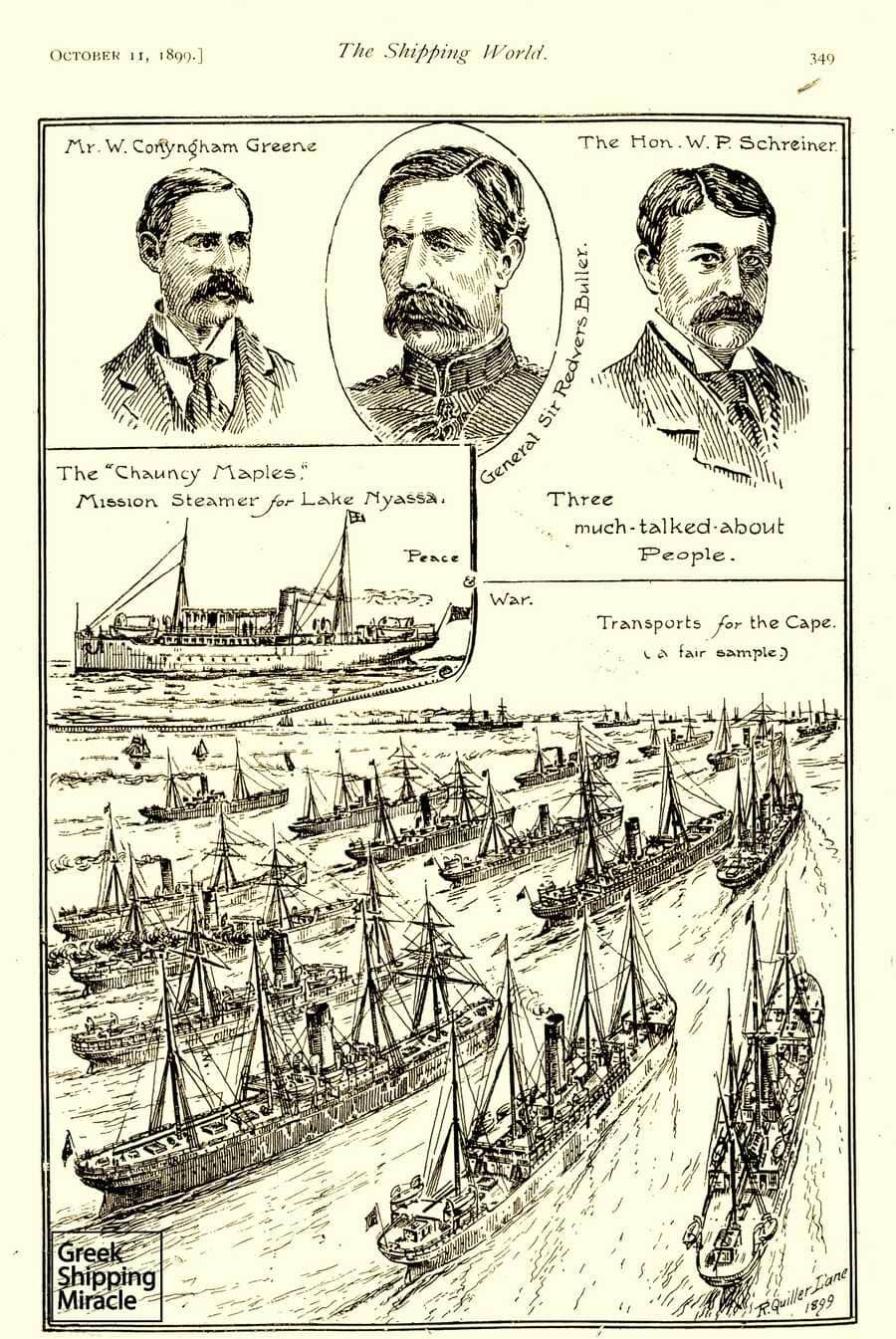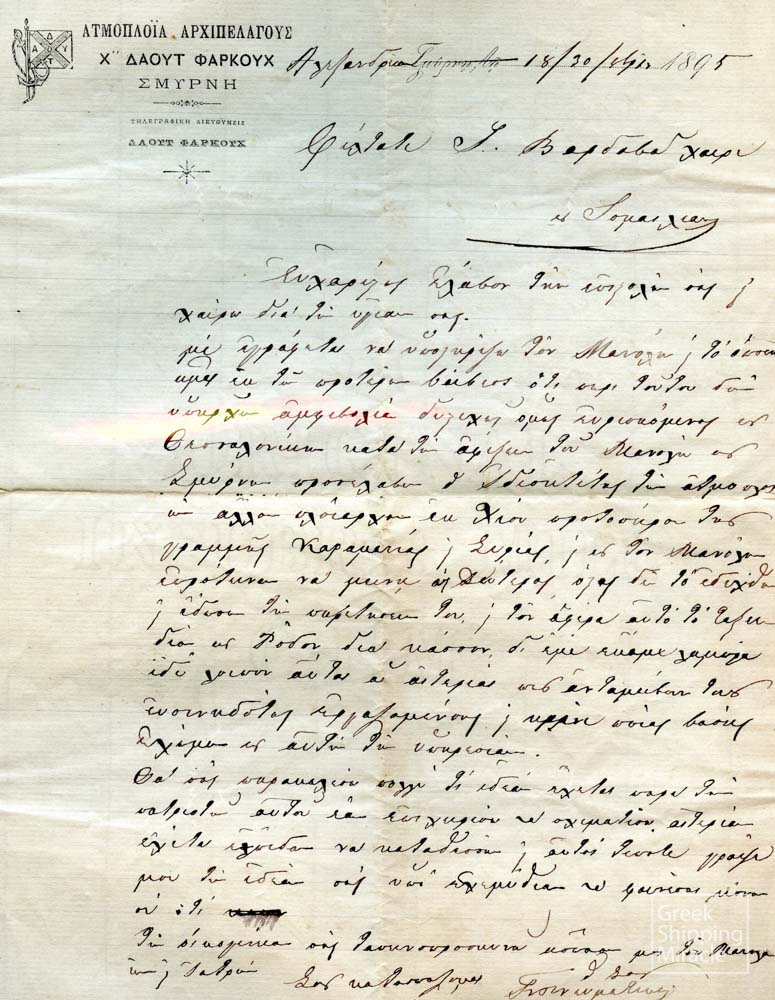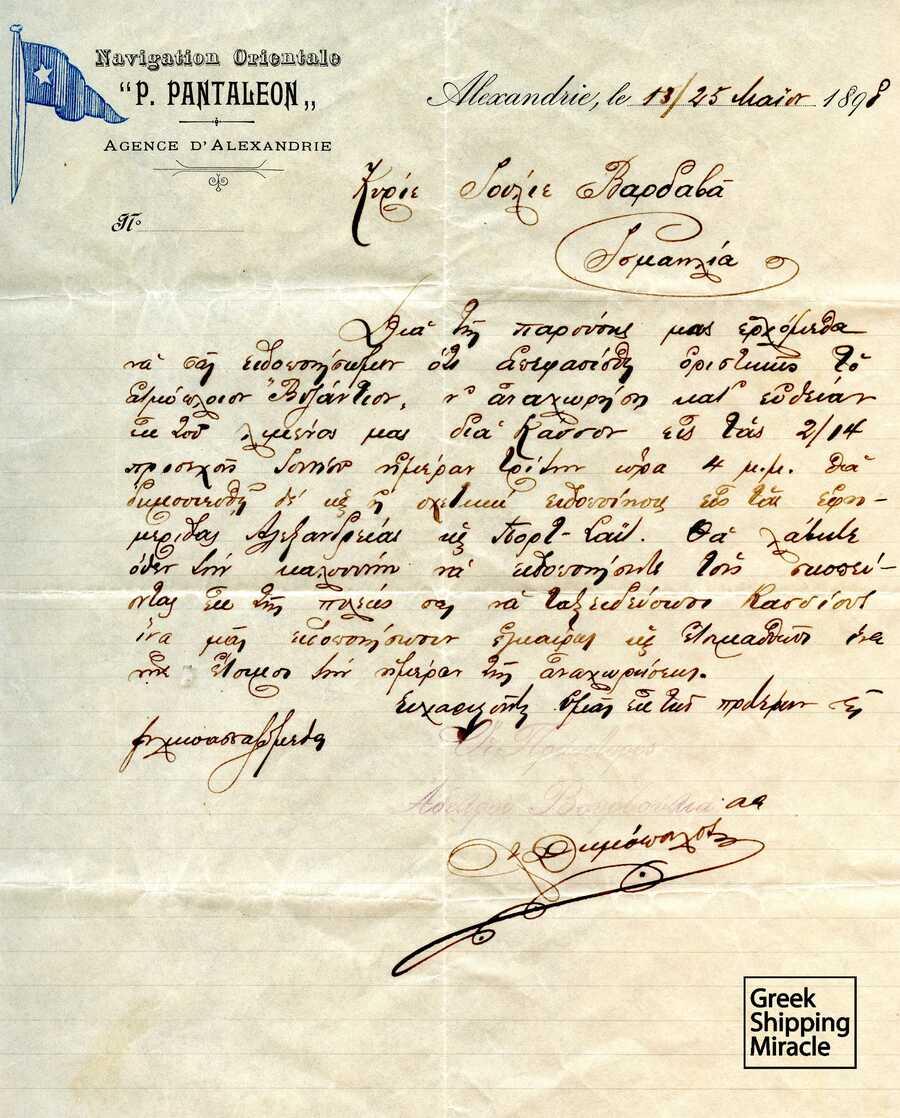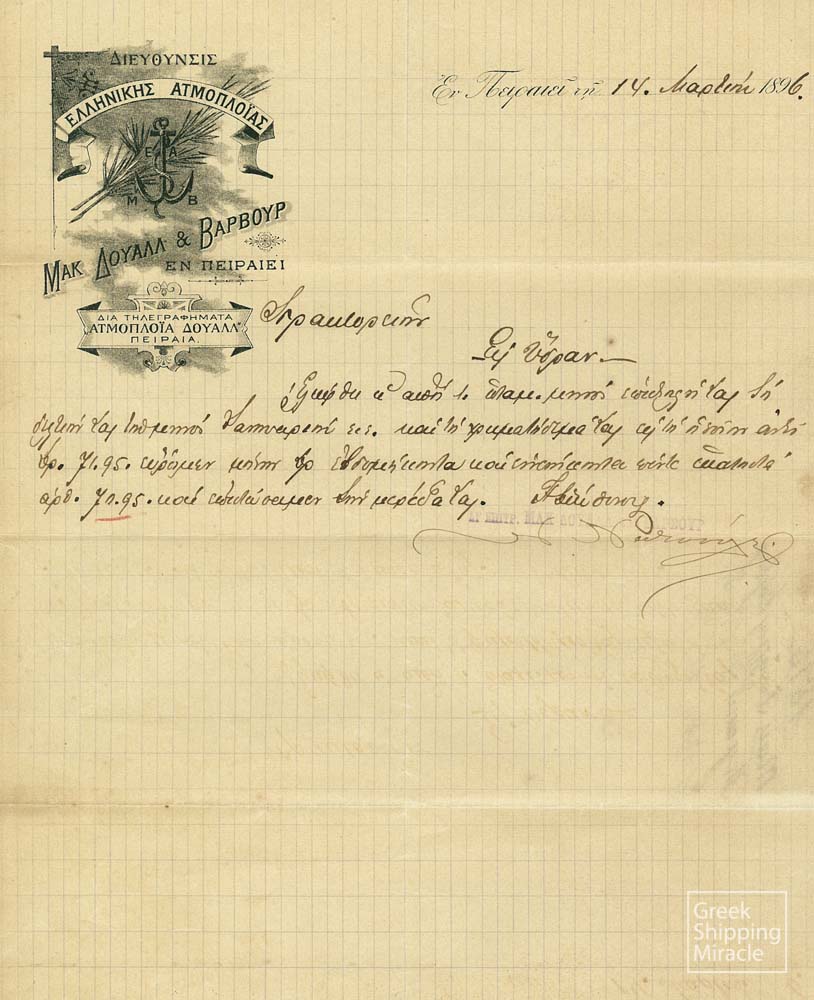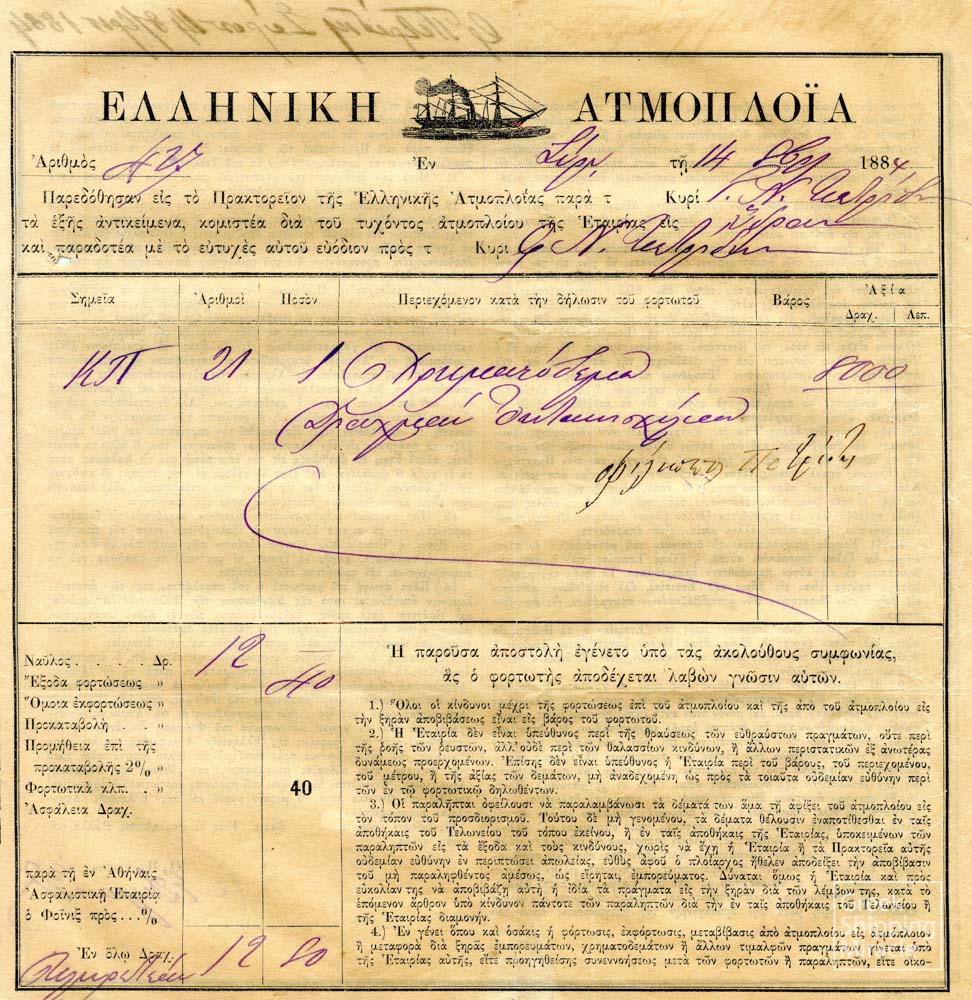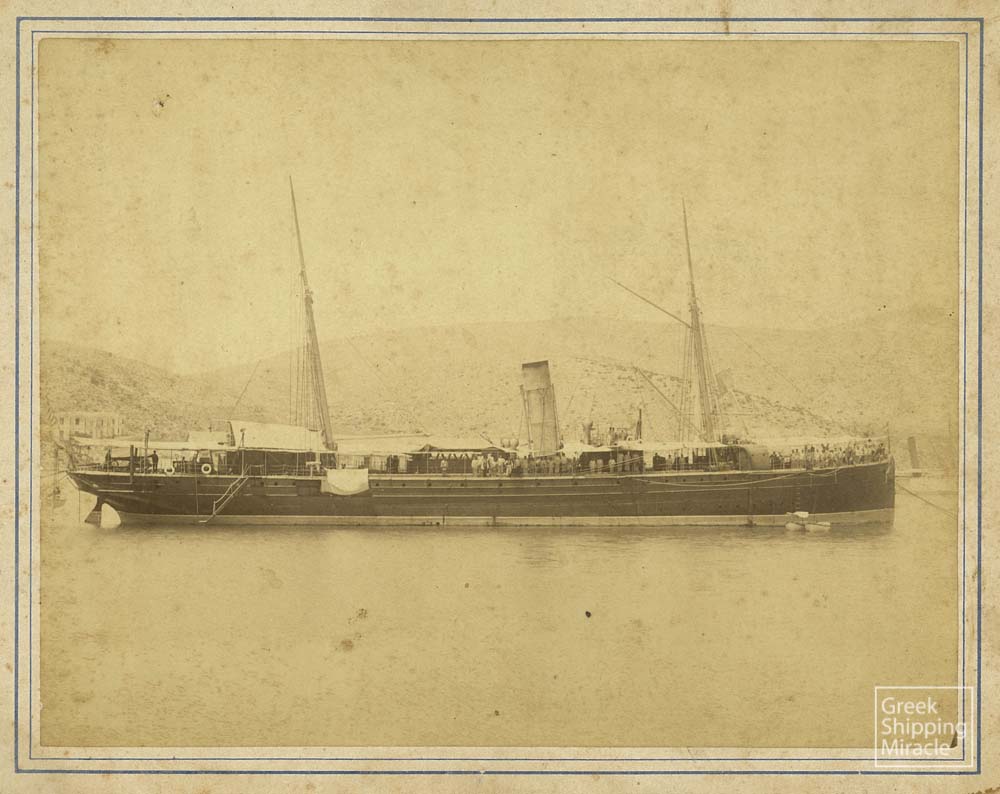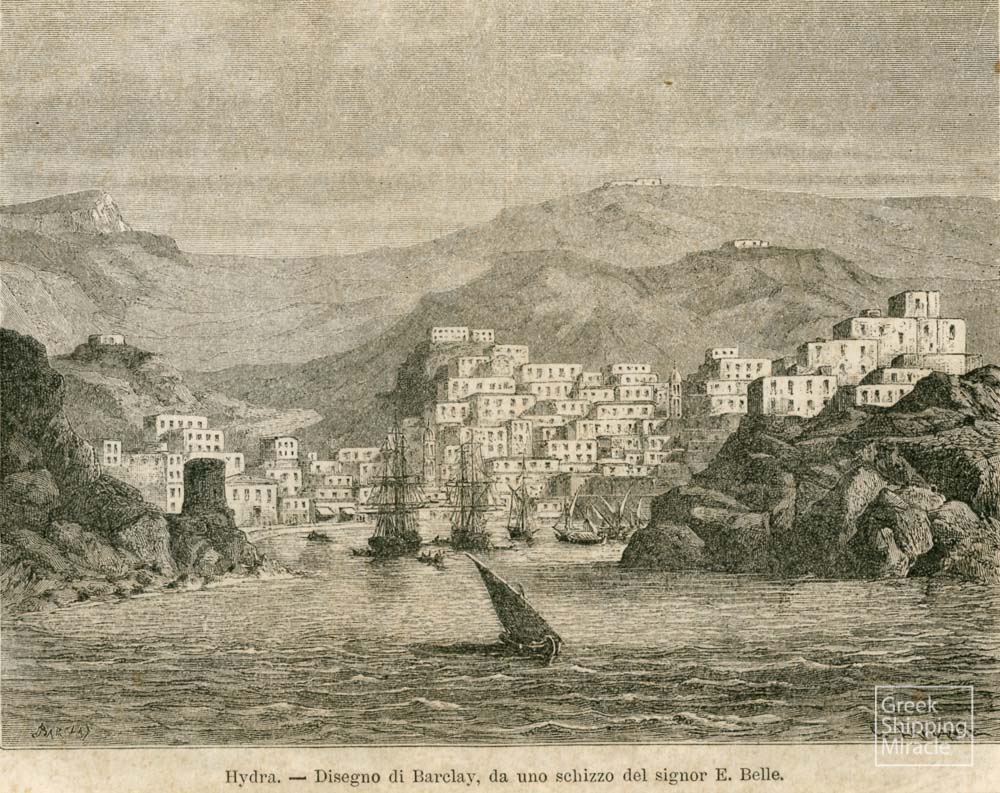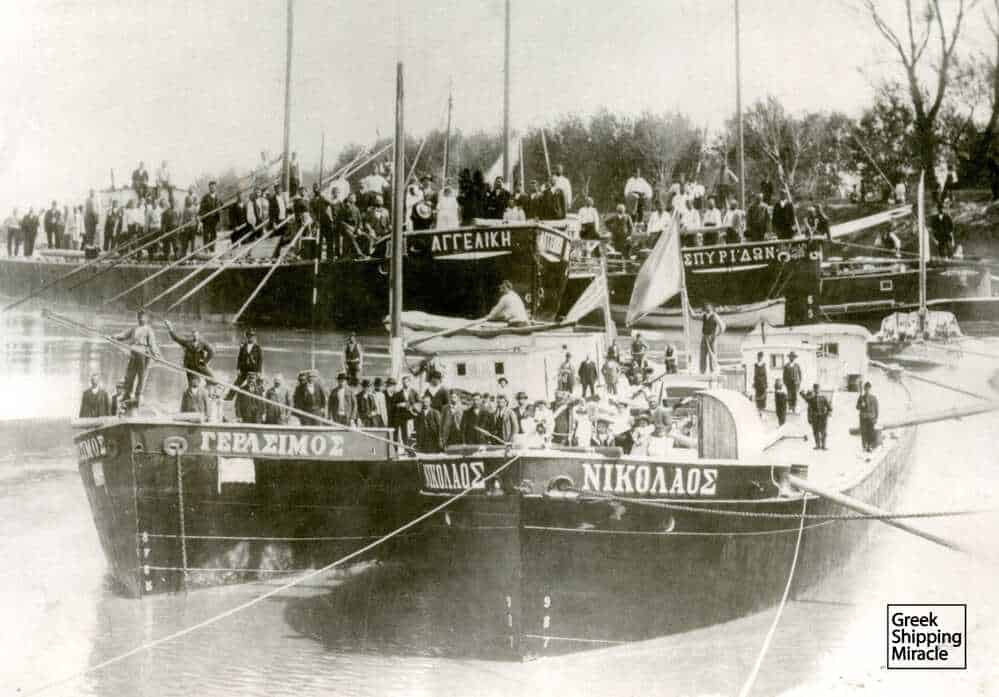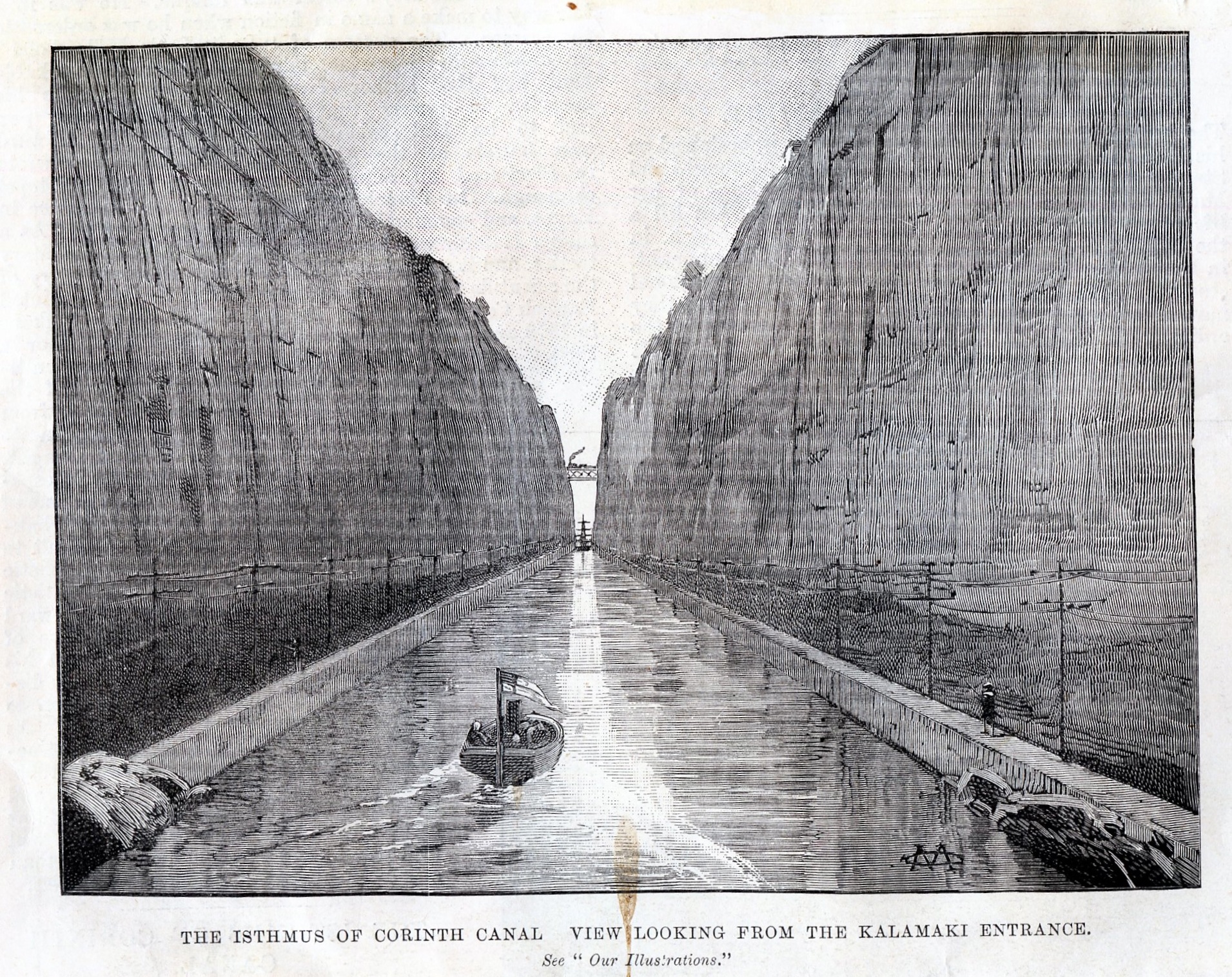From Sail to Steam (1870-1900)
During the last three decades of the 19th century, the Greeks slowly, yet decisively, succeeded in transitioning their merchant fleet from sail to steam. Up until the early 1870s, the Greeks had the opportunity to build almost all of their sailing ships in their homeland. Many shipbuilding sites throughout Greece worked daily in order to launch fine sailing vessels, which had allowed the seafarers of the time to establish a strong presence within the Mediterranean and the Black Sea.
With the steady rise of steam in maritime transport, the era of the sailing ships gradually came to an end. It was impossible to build steamships in Greece, while the capabilities of the State to establish a competitive shipbuilding industry were practically non-existent. Therefore, the acquisition of steamships from abroad, especially the United Kingdom, was the only option. It is worth mentioning that during the initial years of steamship evolution, there were no aged second-hand ships that could be acquired at low prices. The Greek seafarers only had limited budgets and, in most cases, could not even afford the purchase of a 12- to 15-year-old steamship, whose price was ten or even twenty times over the value of a sailing ship.
Given these facts, one can understand the problems encountered by seafarers in their efforts to replace sailing vessels with steamships at the time. On the other hand, it is easy to appreciate the catalytic role that Greeks of the diaspora eventually played in assisting their compatriot mariners to transit from sail to steam. They were the only people who had at the time both the financial ability, as well as the business reputation, to invest in these high-priced new technology vessels. These are essentially the first Greeks who became owners of steamships, trading mainly under the Greek flag. It is worth noting, however, that a significant number of Greek-owned ships were also registered in Russian, Turkish and UK ports, sailing under the flags of these countries. This demonstrates the international nature of Greek entrepreneurs in shipping, even during that time. Many Greek captains of sailing ships served as masters on these vessels before acquiring their own steamships, with financial support from their fellow countrymen.
The most important milestone in the transition of Greek mariners from sail to steam was recorded in 1873 when Romanian-based businessmen, brothers John and Anthony Theophilatos, from the island of Ithaca, had the first Greek-flagged steamship, the ITHACA, built to their order by R. Thompson, Jr. in Sunderland, United Kingdom.
From this point onwards, the Greeks began their journey towards a new maritime reality, with slow, gradual steps. This was not only resultant of the absence of necessary capital, but also due to the complete lack of knowledge of the Greeks regarding the operation of engines installed on these newly-developed ships. The Greeks may have always been excellent sailors but, until then, knew nothing about the operation of engines. The first steamships also had the option of operating with sails, but no steamship could sail without engineers. Thus, most of the Greek steamers acquired, had to employ foreign engineers, who simultaneously acted as instructors for their Greek colleagues.
The Neorion machinery plant in Hermoupolis, on the island of Syros, played an important educational role in engine operation. Established in 1861 in order to serve the needs of vessels belonging to the Hellenic Steamship Co. and employed in Greek passenger coastal service, it functioned as the first unofficial School of Engineering for the Greek merchant navy. Its invaluable contribution was followed over the next decades by the establishment of other engine shops and plants in the country, especially in Piraeus.
An additional reason as to why the Greek steamship activity was developed rather slowly until the end of the 19th century was the fact that the majority of those who acquired such vessels were not seafarers themselves. As they were also involved in other entrepreneurial activities, mainly in the field of trade, the first owners of Greek-owned steamships had no real incentive to rapidly develop shipping, which they considered a secondary activity, unlike the Greek seafarers who owned sailing ships and operated them as a family business.
It is characteristic to note that out of all the important Greek businessmen of the diaspora, who went on record as steamship owners until the end of the 19th century, only the Embiricos family managed to leave a mark in shipping that can be traced until today. Even the Vagliano family, headed by the great Panaghis Vaglianos, who is acknowledged as the true founder of Greek steamship activity due to his large investments in newbuildings from the 1880’s onwards, failed to remain active in shipping after the founder’s death in 1902.
Throughout the last three decades of the 19th century, the Greek state did not contribute in the slightest way to the development of the merchant marine and its transition from sail to steam. There was complete absence of shipping policies and adequate legislation, even for the purpose of facilitating bank loans for the acquisition of steamships. The merchant marine activity was placed under the auspices of the Ministry of the Marine, responsible in essence for the operation of the Navy.
Despite the adverse environment, almost 200 steamers were acquired and managed by Greeks during these three decades. This is remarkable, especially if we take into account that around 40% of these steamships were newbuildings. Their operation proved extremely beneficial for the country. Beyond the creation of thousands of jobs without any state investment, all revenues from shipping, being funds solely earned abroad, entered the country at a time when it faced bankruptcy. The islands, especially the ones whose inhabitants were traditionally involved in shipping, greatly benefitted from this development. Almost the entire infrastructure of the islands was based on revenues from the shipping activity of the Greeks, which would not have had the same path during the new century without its successful passage from sail to steam.
However, towards the end of the 19th century, and despite the gradual transition of a large number of traditional seafarers to steamship owners, the overall scene changed. World shipping began to show signs of recession as a consequence of continuous newbuilding activity, mainly by British shipyards, which resulted in oversupply of tonnage. In such an ominous environment, Greek shipping, solely operating to serve international needs while not relying on national transportation at all, faced an extremely difficult situation. However, an unexpected development, namely the Boers War in South Africa which broke out just before the turn of the century, created new standards in supply and demand, as many British merchant ships were requisitioned for the transportation of troops and cargoes. This international development allowed the Greeks of the diaspora to re-enter the shipping world that the British had nearly monopolised since the rise of steamships, giving them momentum to embark on a new, dynamic course towards the new century.

